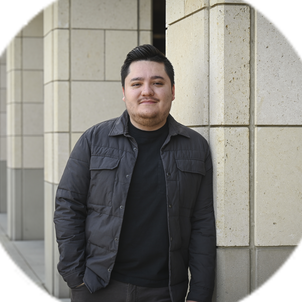I worked for a few years as a research engineer in industry, but eventually decided I wanted to do cutting-edge work in machine learning and AI, so I came to Stanford for my PhD. Genomics and biomedical applications were just beginning to open up, and it seemed to me that the next new area would be applying AI methods to making predictions about health and our genomes, which influence who we are. Stanford is an incredible place to merge my interests, because the synergy between the medical school and the school of engineering is amazing, and I can move back and forth easily between them.
My focus now is working on algorithms and models that use a person’s genome to predict their disease risk and the individual treatments doctors should consider in their health care. Most algorithms and models focus on populations of European descent, but that leaves out most of the world. I’m working to extend those predictions to diverse worldwide populations. Right now we’re focusing on Pacific Islanders, and as part of that we want to involve students who come from that background.
In the future, I think everyone will have their genome incorporated into their medical record, so we’ll be able to match specific treatments to their genetic makeup and monitor patients at a higher genetic risk of certain diseases. As these data sets grow in medicine, we’re going to have much more accurate insights. But there’s a lot of algorithmic work that goes into that.
I love the puzzle-solving aspect of my work and its implications for real-world health outcomes, but I also love the really interesting historical insights we’re gaining about what’s happened in the past to different groups and how they mix. One of our recent papers showed that Native Americans and Pacific Islanders had contact in the Middle Ages, taking place long before Europeans ever reached the Americas. We know this because we can trace their DNA sequences. The writer William Faulkner said, “The past is never dead. It’s not even past.” And this is very much true in the research we do.
Young people entering engineering are often overwhelmed by the idea of selecting an area in which to work, but so many of these fields are just different paths to the same destination, and you can move from one path to another in many stages of your career. I advise students to take the path that looks interesting at the moment, to move slowly and steadily, and to just keep making progress.
Related spotlights

Adrienne Propp

Lara Weed

